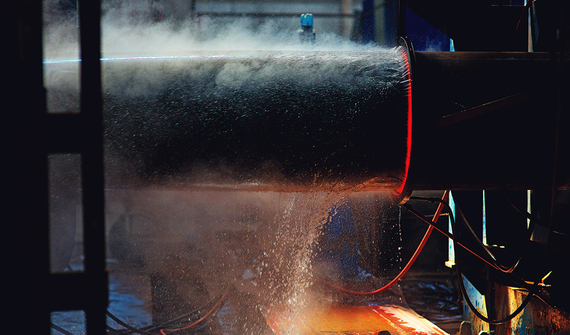These past days, where climate challenges, water scarcity and finding solutions to the grave issues, the world is facing, are on top of the agenda, an old saying has popped to my mind: "Little drops of water make the mighty ocean". It says something about the value that lies in every single contribution made to solve a given problem, and it says something about the necessity of handling issues together rather than alone. On top of that, I think that it is a saying, which has a "graphical value" too. I, for one, cannot help picturing drops turning into huge water masses, when thinking about it.
Drop by drop we can make a difference... This goes for some of the challenges on water scarcity, too. We can make a tremendous difference, if we all do our part and claim accountability for some of the troubles, which are occurring every single day. One such issue is concerning the handling of our drinking water. A big and alarming number makes action needed now. 46 billion liters of fresh, ready to drink water are lost on its way to consumers each day. That's 46 billion liters.
Due to leaky pipes and too high water pressure. In some cities, the loss is as high as 70 percent. That is a whole lot of water, which is lost before ever reaching the consumers. A worrying fact, which seriousness is underlined by the World Economic Forum. In their recent Global Risks Report, water overuse identifies as one of the top risks. Meaning, we need to do something about this.
But what to do, you might think. An answer lies in the ground and has to do with the old, worn out water distribution pipes dug under the world's cities. But it does not necessarily involve major construction works, digging its way to the pipes and repairing or replacing them. Smart pumping can do the trick.
The reason why, pumps play a part in the solution lies in the portion of the water loss problem that concerns the too high pressure applied to the network. You see, in order to make sure that consumers get the water they need, whenever they turn on the tap, many water utility companies simply keep pressure high 24 hours a day. This puts pressure on the pipes and results in water pouring out of cracks and holes in the piping. If we adapt the pressure in the network to the habits of the consumers, we can come a long way.
We call it demand driven distribution. In short, it's about keeping pressure on the water high in peak periods as for instance the morning, while lowering it in the off-peak periods.
It's done by combining several pumps, which can be turned on/off as needed, with intelligent controls, capable of "remembering" consumption habits of the people and powering the pumps as needed. This reduces leakage significantly.
To add to the wins coming from this method, when utilities do not have to keep pressure high and pumps running 24 hours a day, energy can be saved too. In a previous post, I have touched upon the connectedness of water and energy and the importance of handling both issues, and in this respect, I feel happy that saving drops for the one issue, can spill over and do a positive difference in the other, too.
This post is part of a "Nordic Solutions" series produced by The Huffington Post, in conjunction with the U.N.'s 21st Conference of the Parties (COP21) in Paris (Nov. 30-Dec. 11), aka the climate-change conference. The series will put a spotlight on climate solutions from the five Nordic countries, and is part of our What's Working editorial initiative. To view the entire series, visit here.

